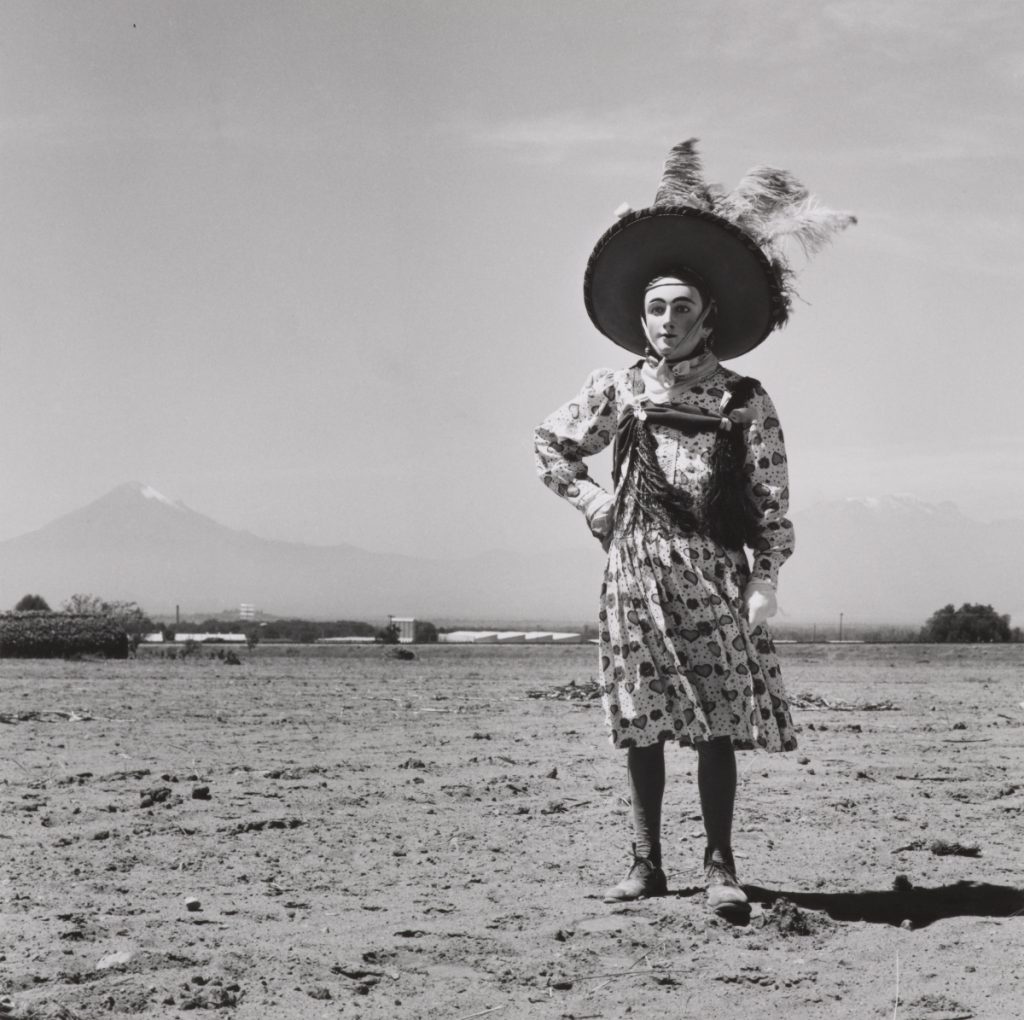Carnaval, Tlaxcala, Mexico (work of art)
Artwork Info
Key Ideas
- Graciela Iturbide is a Mexican photographer. She is known for her photographs of Indigenous villagers in rural Mexico.
- Iturbide shot these images in a village in rural Mexico. She uses photography to recognize and preserve the culture of pre-Hispanic people.
- The person in this photograph is dressed in festive attire to celebrate Carnaval (the Spanish word for Carnival). This celebration includes public events, parades, and street parties.
- Iturbide spent extended periods of time with the communities she was documenting. It was important to her to develop relationships with the people she photographed.
- This photograph is a gelatin silver print. Gelatin silver printing is the most common process for making black-and-white photographs.
Learn More
Graciela Iturbide is a Mexican photographer. She is known for her photographs of Mexico’s Indigenous cultures like the Zapotec, Mixtec, and Seri. She has also photographed life in Mexico City, Juchitán, Oaxaca, and the Mexico-United States border. Her work focuses on themes of identity, daily life, and the roles of women. Her photographs share visual stories of the cultures of Mexico. Her work explores urban and rural life, as well as Indigenous and modern life.
I don’t pretend to make my photographs speak the truth of what Mexico is all about. But in its villages, I can feel the way culture is changing, and it’s fascinating to live through it and try to capture it on camera.
Graciela Iturdibe
During the 1970s Iturbide worked for the National Indigenous Institute of Mexico. They commissioned her to create a photographic series documenting Indigenous cultures in Mexico. She photographed and documented villagers in rural Mexico. It was important to her to develop relationships with the people in the communities she was documenting. Her first collection of images, titled Mujer Angel (Angel Woman), was released in 1979. Iturbide is a leading activist in preserving the culture of the pre-Hispanic peoples.
To me it’s more important to get to know the worlds I travel in; this knowledge is so attractive that the photography almost takes second place.
Graciela Iturbide
The title of this photograph refers to the celebration of Carnaval (Spanish for Carnival) in Tlaxcala, Mexico. Carnaval was established as a holiday in the European Middle Ages. It was brought to Mexico by the Spanish conquistadors who colonized Mexico under the Spanish Empire. The celebration includes parades, street parties, and dancing. In rural Mexico this celebration is influenced by the traditions and religions of Mexico’s pre-Hispanic cultures.
This photograph was made using gelatin silver printing. This is a popular process for creating black-and-white photos. The film was covered with a mixture of gelatin and silver halides. After the paper dried, it was exposed to light through a photo negative. The image was developed by placing the paper in chemicals that react to gelatin and silver.
Additional Resources
Resources for Teachers
- Watch a video about the artist.
- Read the artist’s bio.
- View more works by this artist.
Resources for Students
- Watch a video about the artist.
- Watch a short documentary about the celebration of Carnaval in Tlaxcala, Mexico.
- Read an article about the celebration of Carnaval in Tlaxcala, Mexico.
Images
-

Carnaval, Tlaxcala, Mexico
A black-and-white photograph of a person standing in a rural setting in Mexico. The person is wearing a painted face mask, a dress, white gloves, stockings, boots, and a black hat with a wide brim and large feathers on top. There are some trees, buildings, and a large mountain in the background. The bottom half of the photograph is a barren field made up of dirt and rocks.
